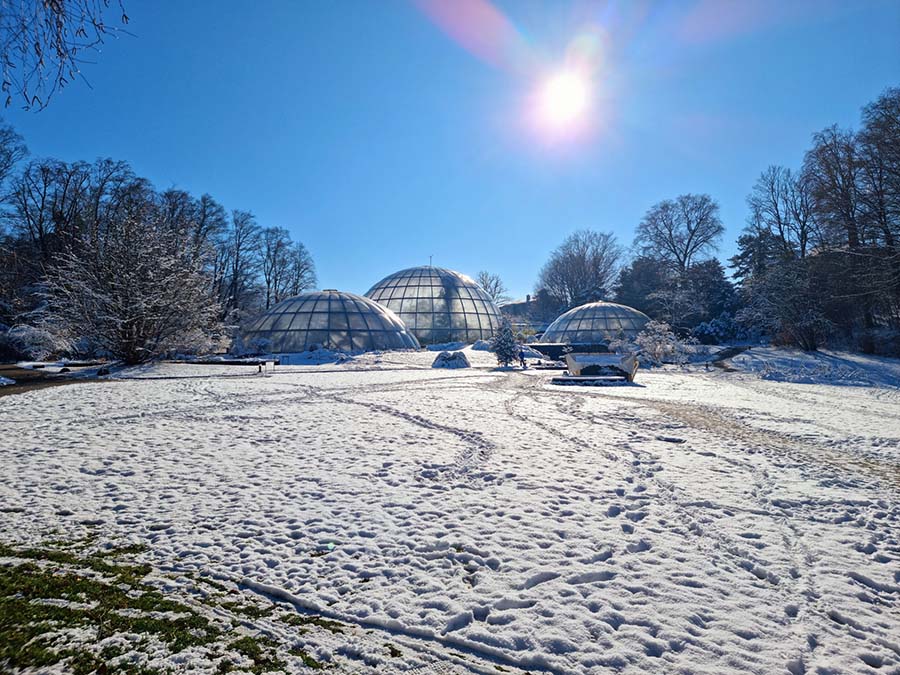When it comes down to designing your greenhouse, think of it as a specialized house for plants, with your geothermal system as its furnace. You can install the most powerful and efficient furnace on the market, but if the house has drafty windows and no insulation in the walls, your plants will still be cold and your energy bills will be sky-high.
A powerful geothermal system is wasted if the greenhouse it’s in can’t hold onto the heat. That’s why the physical design—the foundation, the angle to the sun, the insulation—is just as critical as the heater itself. An energy-efficient structure and a good heating system work as a team to keep the growing environment stable and your energy bills low.
Site and Orientation: Working with the Elements
You might be surprised to hear that the two most important decisions you’ll make for a successful greenhouse come before you even break ground. It’s true: the questions of where you place your greenhouse and which way it faces determine how much free energy you can capture from the sun and how much heat you’ll lose to the winter wind.
Facing South: The Golden Rule of Solar Gain
In the Northern Hemisphere, the sun travels in a low arc across the southern sky during the short days of winter. To capture the maximum amount of this free solar heat, the longest wall of your greenhouse, with the largest surface area of glazing (your covering), must face due south. This foundational principle of passive solar design is the single most important factor in reducing your greenhouse’s winter heating load.
It probably goes without saying, but we’ll say it anyway: For our Southern Hemisphere friends, your greenhouse should be facing due north.
Smart Siting: Blocking Wind and Cold
After maximizing sun exposure, the next goal is to minimize the heat-robbing effects of winter weather.
Block the Wind
Position your greenhouse to take advantage of a windbreak. Siting it on the south side of a dense row of evergreen trees, a solid fence, or existing buildings will protect it from cold northern winds, which can dramatically accelerate heat loss.
Avoid Frost Pockets
Cold air is dense and heavy. It sinks and settles in the lowest-lying areas. Avoid placing your greenhouse at the bottom of a hill or in a low-lying dip where this cold air can get trapped, creating a “frost pocket” that will force your heating system to work much harder. A location on a gentle south-facing slope is ideal.
Foundation and Insulation: Building a Better Box
A south-facing greenhouse is great at capturing the sun’s heat, but that’s only half the battle. Now you have to keep that warmth from leaking right back out. A truly efficient greenhouse is basically a well-built, insulated box that’s designed to hold onto every bit of heat it gets.
Insulate the Foundation to Stop the Bleed
The ground under your greenhouse might not be freezing, but it’s still a constant, cool heat sink that will try to suck the warmth right out of your floor all winter long. You’ll need to establish a thermal break to stop this constant heat bleed.
Standard practice is to wrap the outside of your foundation with rigid foam insulation board. You’ll want to run it from the base of the greenhouse walls all the way down to below your local frost line. This simple but effective step physically disconnects your warm greenhouse from the cold surrounding earth.
The North Wall: Your Greenhouse’s Backbone
Since the north wall of your greenhouse gets zero direct sun in the winter, making it out of clear glazing is a rookie mistake that creates a massive hole where precious heat will rush to escape. In your design, picture your north wall as the solid, heat-absorbing back of a fireplace.
A solid, well-insulated north wall does two critical jobs:
- It provides a thermal barrier to block the cold and keep the warmth you’ve generated inside.
- It becomes its own thermal battery by soaking up the sun’s energy that bounces around the greenhouse all day and then slowly radiating that heat back to your plants all night.
Build your north wall out of something solid and well-insulated—like insulated concrete forms (ICFs) or even thick straw bales. This backbone is a key part of an energy-smart design.
Structural Choices: Geodesic Domes vs. Traditional Designs
With your site chosen and your foundation planned, the next big decision is the shape of your greenhouse. While there are countless designs, a geothermal greenhouse usually comes down to two leading contenders: the classic, rectangular style (like a hoop house or a gabled-roof design), and the futuristic-looking geodesic dome. Both are excellent choices, but they have different strengths and weaknesses when it comes to retaining heat.
Geodesic Domes: Strength and Efficiency
A geodesic dome is a hemispherical structure made of interconnected triangular panels. This design is famously strong and has some unique thermal advantages.
Excellent Heat Circulation
The curved interior of a dome promotes natural air and heat circulation, preventing hot and cold spots and naturally maintaining a very even temperature throughout the structure.
High Strength and Wind Resistance
The interconnected triangles of the dome’s walls make the structure incredibly strong for its weight, and its aerodynamic shape is excellent at shedding wind and heavy snow loads. This can be an enormous advantage in blustery northern climes.
Efficient Shape
It might be hard to visualize, but we’ll trust the math: the nature of a sphere contains the most volume inside the smallest surface area. In practical terms, this means that, compared to a rectangular building of the same size, a geodesic dome has less exposed surface for heat to escape through.
On the other hand, geodesic domes still look “futuristic” because they’re not nearly as widely adopted as typical rectangular buildings. There are a couple of important reasons that’s the case.
Complex Construction
Building a dome, especially sealing all the numerous seams between the triangular panels, can be much more complex than building a simple rectangular frame.
Less Usable Space
The curved walls can make it awkward to install long, straight planting beds and benches, which can make for less efficient use of the floor space.
Traditional Rectangular Greenhouses: Practical and Simple
The classic rectangular greenhouse is the industry standard for a reason. It’s a practical and straightforward design that is easy to build and use.
Simple Construction
Building a traditional rectangular structure is straightforward, with fewer complex angles and seams to worry about.
Maximum Usable Space
The straight walls and right angles make it a simple matter to lay out long, efficient rows of planting beds and benches for maximum growing area.
Perfect for Passive Solar
As we discussed, a long south-facing wall is the key to passive solar gain. A rectangular design is the ideal shape to take full advantage of this principle.
Still, there’s a reason geodesic domes have risen in popularity enough to challenge traditional greenhouse design.
Less Efficient Shape
A rectangular box has a lot of surface area for its volume, meaning there are more walls and a larger roof for heat to escape through.
More Vulnerable to Wind
A high, flat wall can catch a lot of wind, which requires a stronger, more heavily reinforced frame.
Ultimately, the choice often comes down to your priorities. For maximum energy efficiency and strength, the dome is a superior shape. For maximum usable growing space and ease of construction, a traditional rectangular design is often the more practical choice.
The Importance of an Integrated System: Matching Your Structure to Your Heating Source
It’s tempting to think of your greenhouse structure and geothermal heating system as two separate projects, but that would be a critical mistake. To be truly successful and efficient, a geothermal greenhouse must be a single, well-integrated system where every component is chosen to work with the others.
The geothermal system provides the heat, but the building’s design—its orientation, foundation, insulation, and even its shape—ultimately determines how effectively that heat is used and conserved. A high-efficiency heater paired with a leaky, uninsulated structure is a recipe for high energy bills and disappointing results.
When planning your project, every choice should be made with the whole system in mind. The goal is to create a high-performance building envelope that partners with a high-performance heating and cooling engine, so that you get the maximum amount of year-round growth for the minimum amount of energy input.
Looking Ahead
You’ve now planned for a smart, well-insulated greenhouse structure which will be connected to an incredibly efficient geothermal heating and cooling engine. But there’s one huge piece of the puzzle missing: the skin that covers it all.
Your greenhouse covering (or skin) is the single most crucial factor for light transmission, and it also has a massive impact on heat loss. In the next chapter, we’ll study the ins and outs of greenhouse glazing, from traditional glass to modern, high-performance films.




